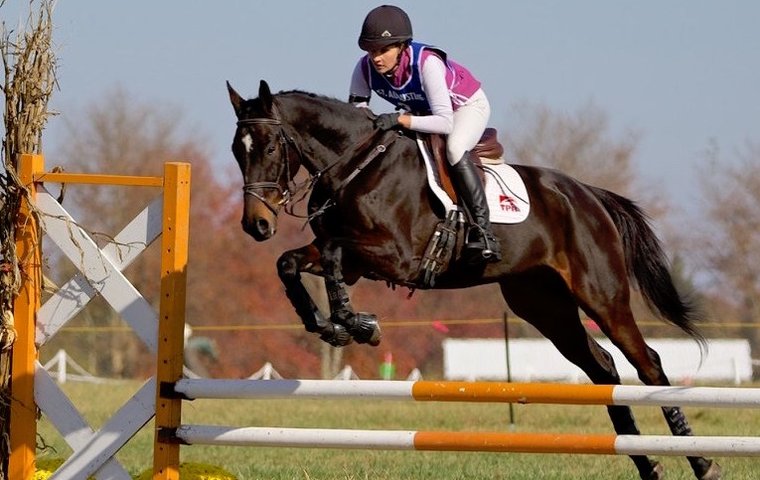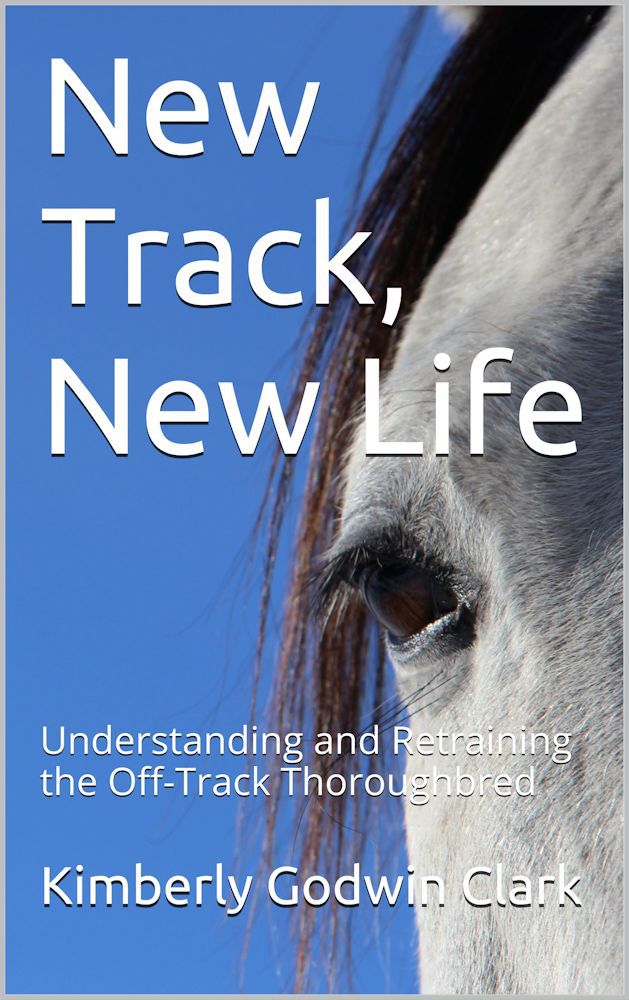
If you own an off-track Thoroughbred, or are thinking of getting one, there’s a book just out that could be invaluable. New Track, New Life, by Kimberley Godwin Clark, who runs a non-profit dedicated to retraining and rehoming retired racehorses, provides a wide range of information that will help you understand these horses better and how to handle and train them as they transition into new careers. Here is a short extract.
 Every horse is an individual, so I cannot give you a ‘cookie cutter’ program on how to retrain your off-track Thoroughbred. Whether you got him directly off the track or from afar, each horse has his own training requirements. These are based on variables, including physical strength, conformation and temperament. Add to that, previous injuries and different race training styles and it’s clear you will have to use your own judgment when working with your new horse.
Every horse is an individual, so I cannot give you a ‘cookie cutter’ program on how to retrain your off-track Thoroughbred. Whether you got him directly off the track or from afar, each horse has his own training requirements. These are based on variables, including physical strength, conformation and temperament. Add to that, previous injuries and different race training styles and it’s clear you will have to use your own judgment when working with your new horse.
It’s important to remember that newly retired racehorses do not have a long attention span. Their training sessions, including a bath and walking to cool out, last at most an hour, so keep in mind he may become fidgety or even unreceptive after a given amount of time.
Just as with small children, attention spans are developed. Pushing too far past a horse’s attention span will result in undesirable behavior.
Always end on a good note, and reward often. If a horse does what he’s being asked to do once or twice, the best thing to do may be to stop for the day. There’s always tomorrow to do it again.
Resist the urge to keep asking over and over again if you are not getting ‘there’. Do something else and come back to it after he’s had a success doing something else, or quit for the day and come back tomorrow. Less can be more. You will remain in control of the session by changing the subject. He gains control when he refuses, rebels or shuts down. A pat or ‘good boy’ is good praise.
Bred to be generous
If at any time you and the horse suffer a setback, go back a few steps to what he was doing confidently and begin again.
It is not commonly understood that most racehorses never win even one race and with each win the odds of winning another race decline. Only a very small number of horses are successful racehorses at any level of racing.
They are trained and prepared for years during their young lives to be racehorses. Imagine how you would feel if you were systematically trained to do something for years only to find out you are no good at it. You tried your best but just couldn’t do it. What would this do for your sense of self, your self-confidence?
This is what many retired racehorses face. They are bred to be generous. Their heightened flight instinct makes many of them extremely sensitive. They are surrounded by humans from a young age and are very attached to the attention and handling they receive. They want to please but leave racing knowing full well they have failed. They lack confidence and this is something that needs to be addressed.
Time and again I see people get a horse off the track and then in two weeks be proud the horse is jumping fences. In a month they have him at a show. That person hasn’t spent any time training the horse. That person is taking advantage of what the horse already knows and the extreme generosity of the Thoroughbred breed.
No short cuts
The real question is, “Should the horse be doing these things at all?” Has he had the preparation that builds confidence to be successful at this new endeavor, or is he being pushed and pressured into doing something he has not been given the tools to do? Does he have the physical development for this new task?
Building a foundation takes time, and there are no short cuts that you and that horse take now that won’t have to be paid for later on down the line. Developing the horse physically to move in a completely new way takes time. The best way to achieve success is through giving the horse the time to develop both physically and mentally.
It is not the good trainer who rushes the horse into a new discipline, it is the foolhardy one, who wishes to show off, or the ignorant one, who does not know that most ‘crazy Thoroughbreds’ have been created by someone just like them.
In many instances, because of his generosity, the horse handles the pressure for a period of time but eventually breaks down physically, mentally or both.
Please consider the welfare of the horse when you make decisions on how to develop and retrain him. Think of his future and ask yourself, “Am I giving him the tools he needs to be successful or am I just taking all I can from this fine animal?”
Kimberly Godwin Clark
After nearly 30 years as an exercise rider and trainer, Kimberly Godwin Clark founded the non-profit Thoroughbred Placement Resources in Upper Marlboro, Maryland, USA, in 2007. TPR, which is accredited by the Thoroughbred Aftercare Alliance, has rehomed nearly 1,000 retired racehorses since.
New Track, New Life is available from Amazon as a paperback or on Kindle. All proceeds go to helping the horses.


